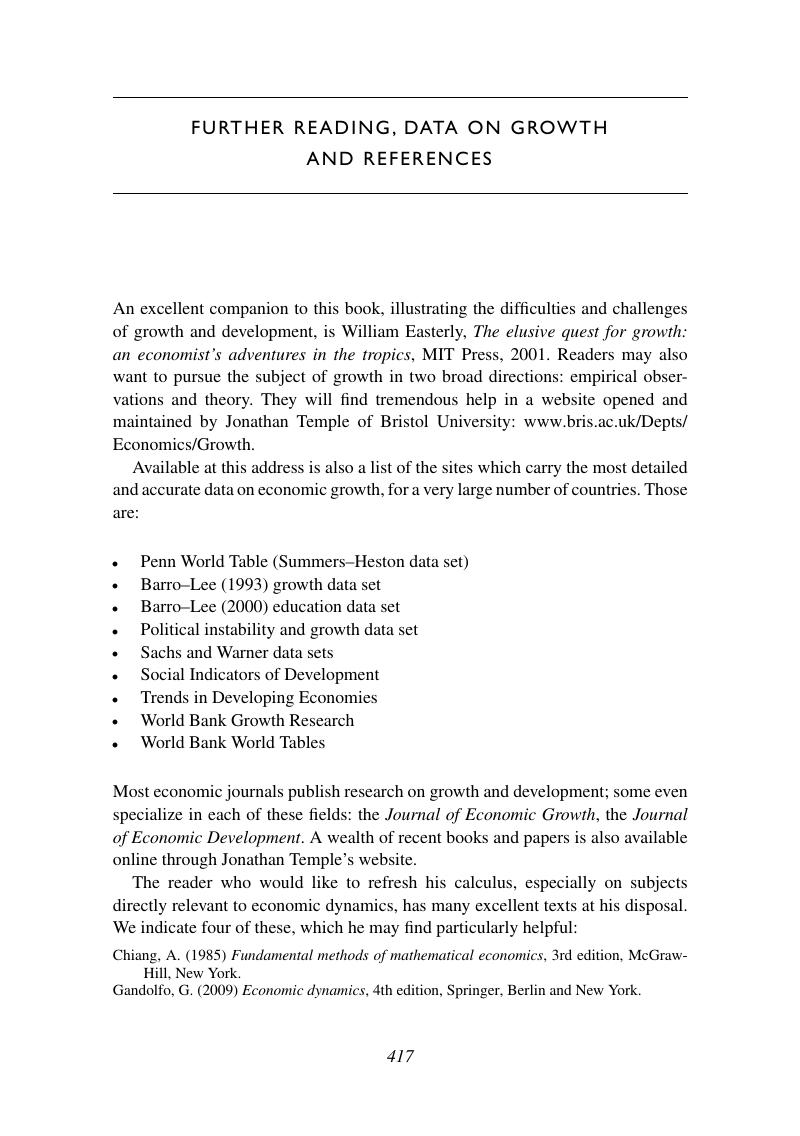Book contents
- Frontmatter
- Dedication
- Contents
- Foreword
- Preface to the second edition
- Introduction to the first edition
- PART I POSITIVE GROWTH THEORY
- PART II OPTIMAL GROWTH THEORY
- PART III A UNIFIED APPROACH
- In conclusion: on the convergence of ideas and values through civilizations
- Further reading, data on growth and references
- Index
- References
Further reading, data on growth and references
Published online by Cambridge University Press: 01 December 2016
- Frontmatter
- Dedication
- Contents
- Foreword
- Preface to the second edition
- Introduction to the first edition
- PART I POSITIVE GROWTH THEORY
- PART II OPTIMAL GROWTH THEORY
- PART III A UNIFIED APPROACH
- In conclusion: on the convergence of ideas and values through civilizations
- Further reading, data on growth and references
- Index
- References
Summary

- Type
- Chapter
- Information
- Economic GrowthA Unified Approach, pp. 417 - 422Publisher: Cambridge University PressPrint publication year: 2016



